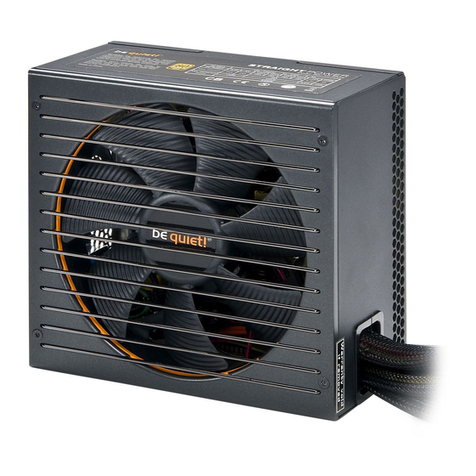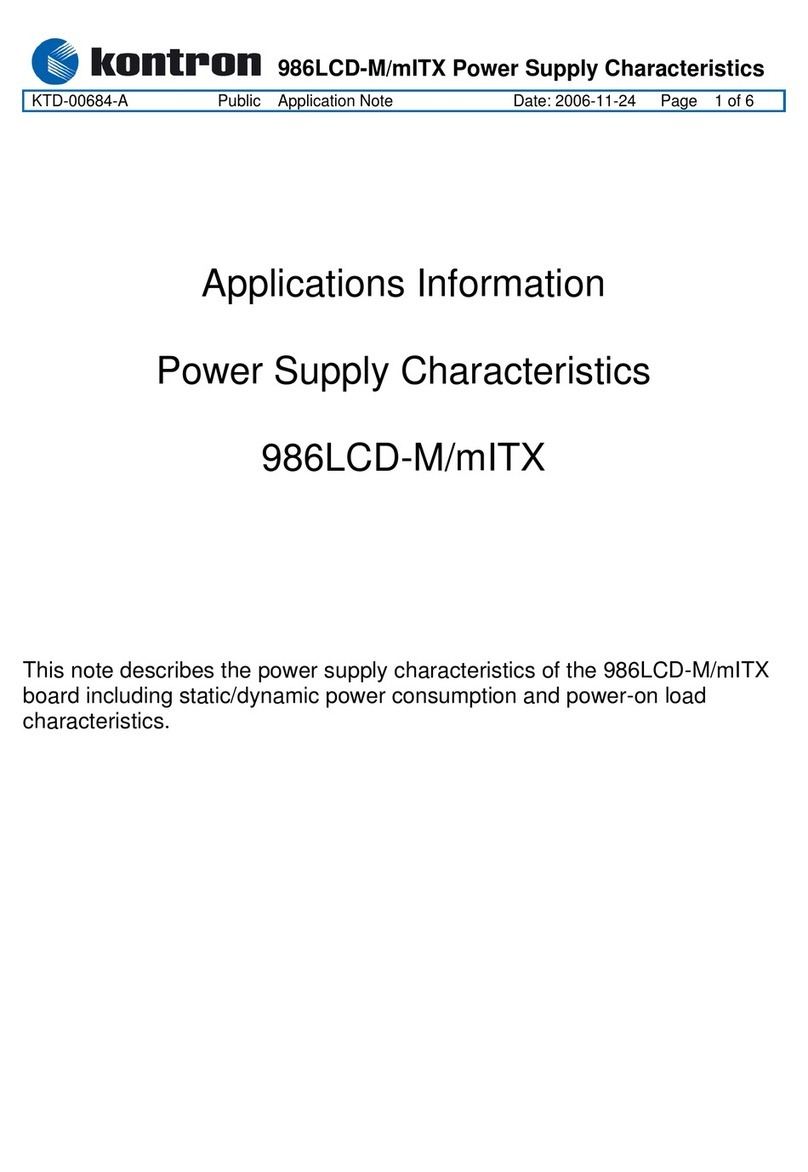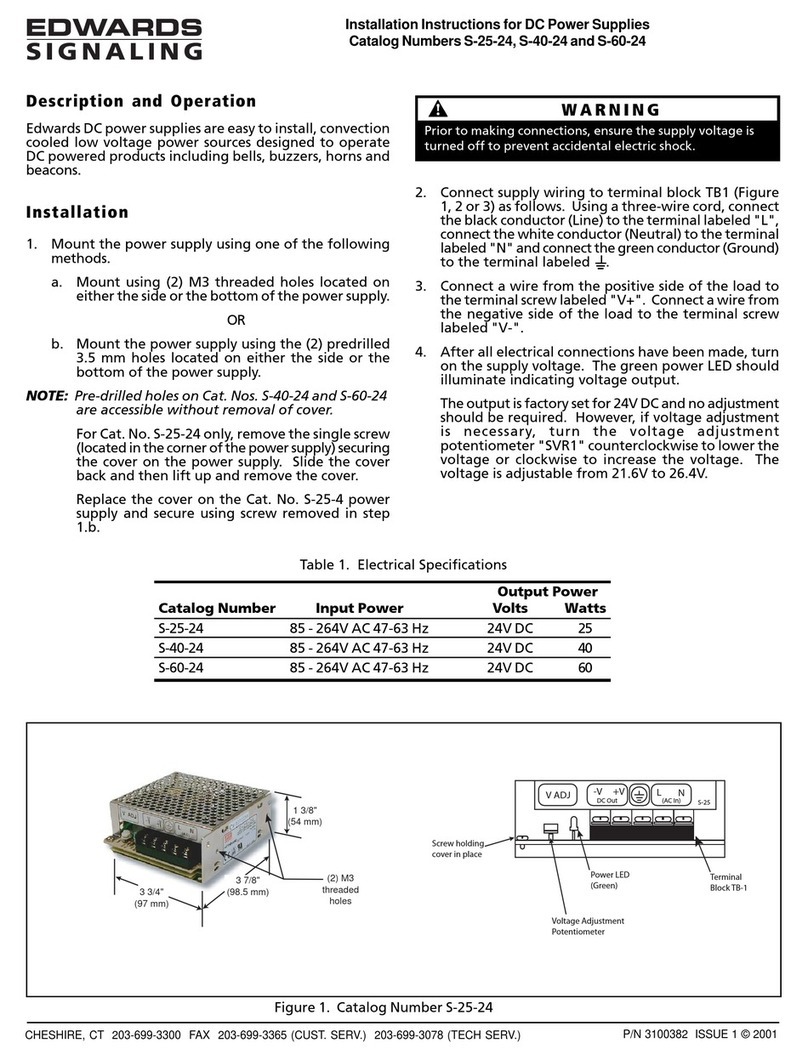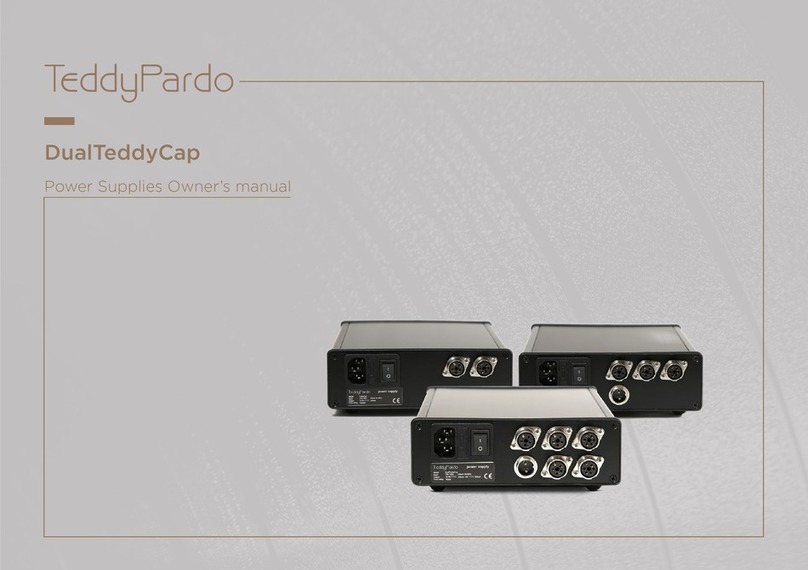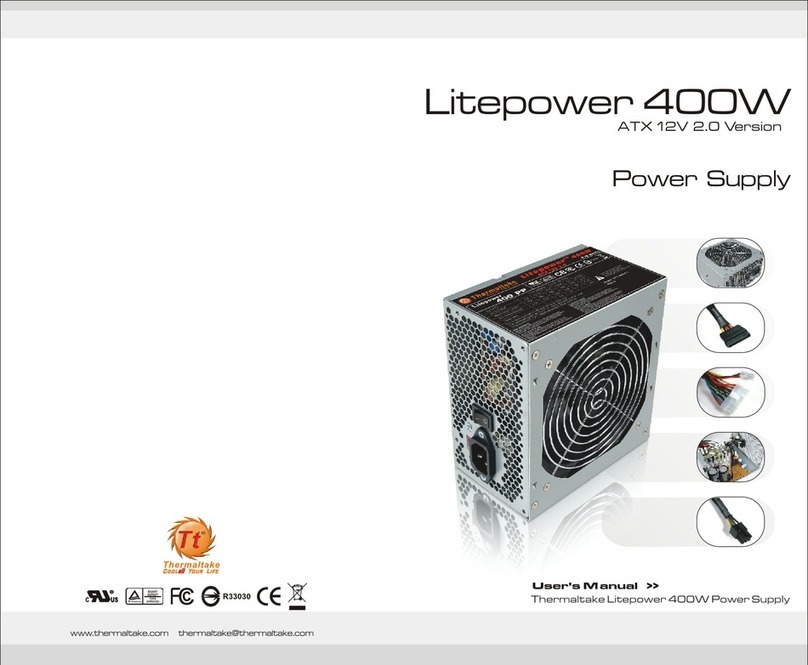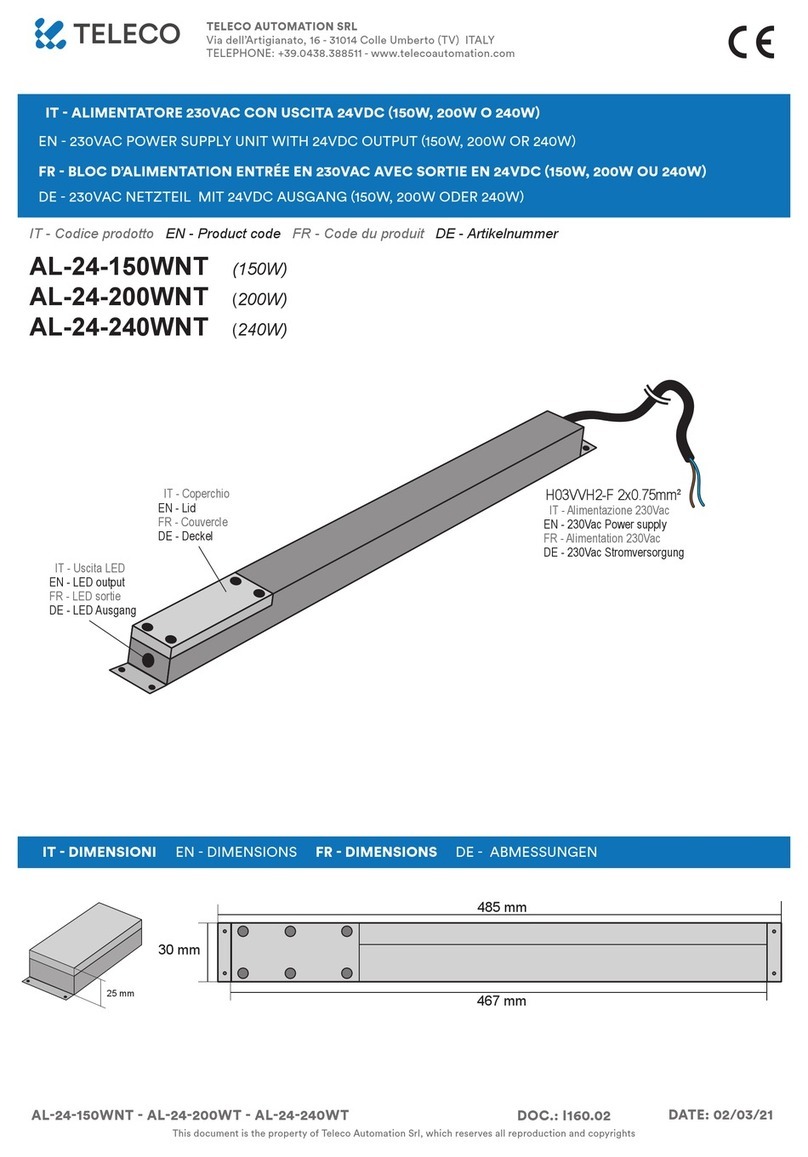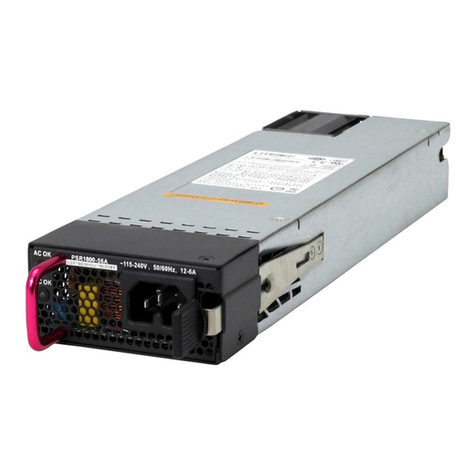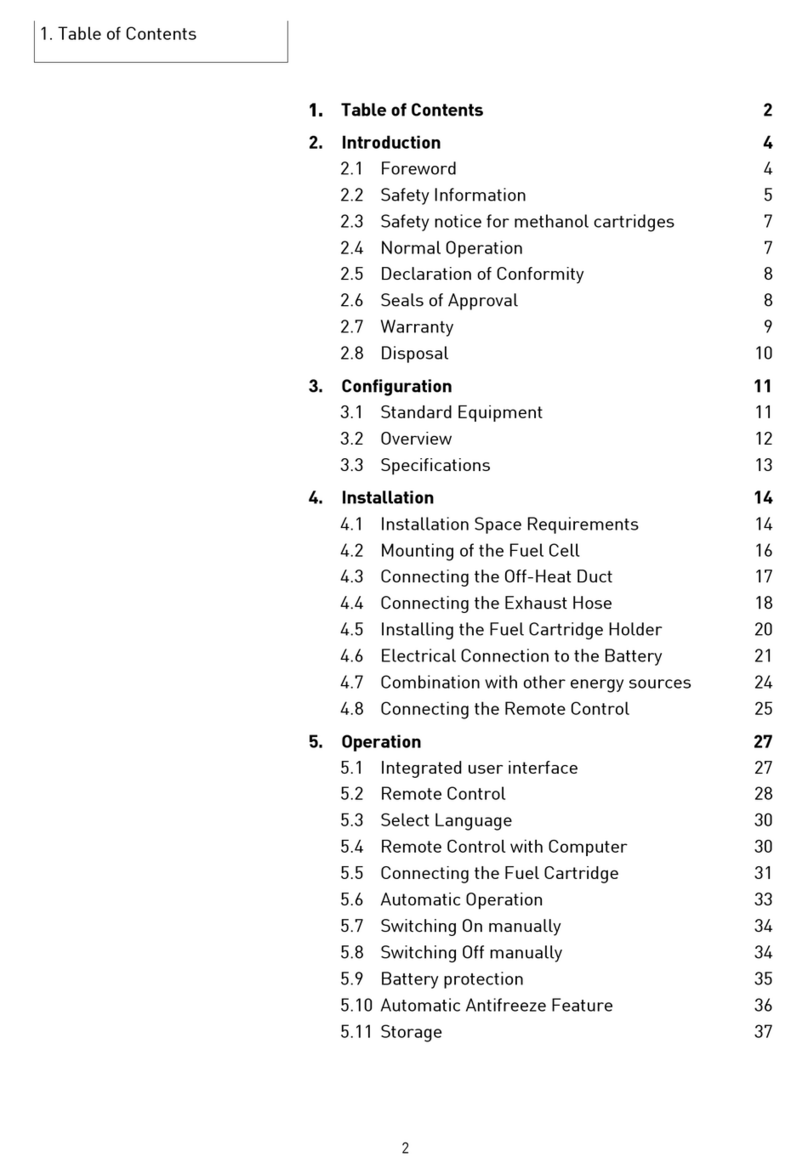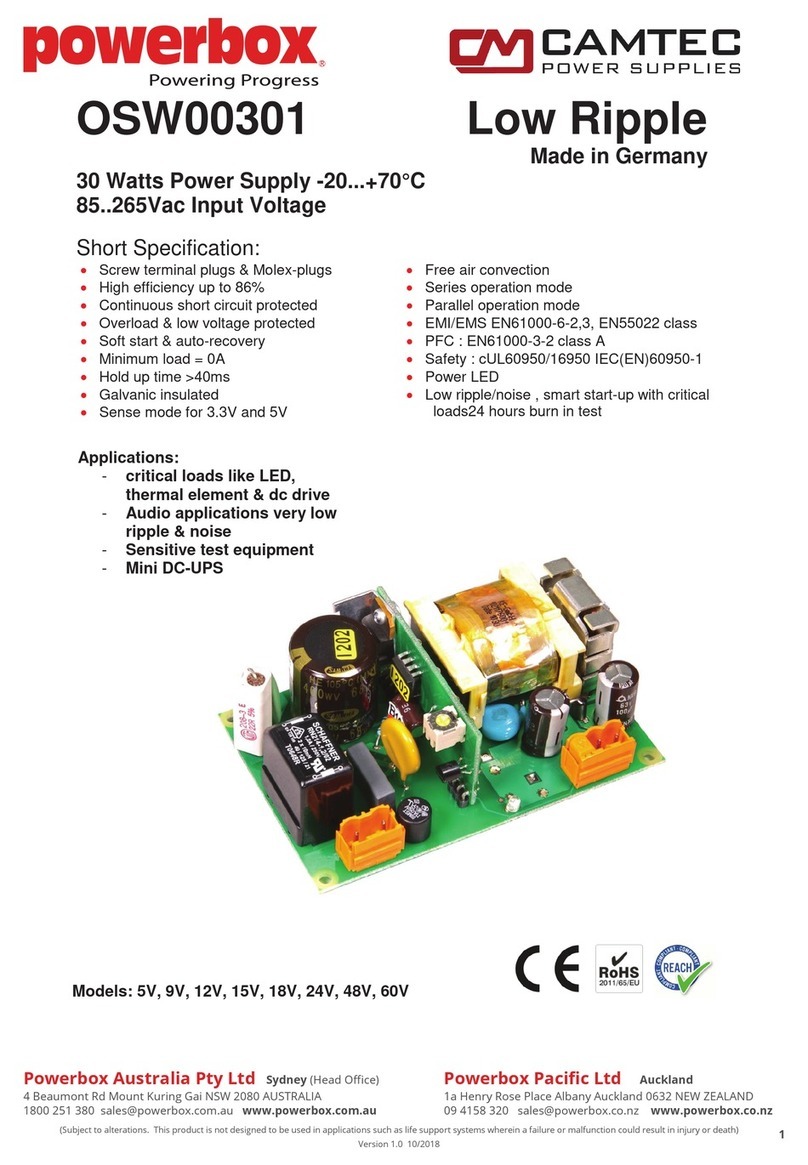Happy Henhouse F15AC User manual

Happy Henhouse™
Electric Fence Energizer
Plug-in Model
F15AC & F25AC
Instruction Manual

Model covered by this manual
Happy Henhouse™ F15AC, F25AC
Content
1. Plug-in Model Fence Energizer
2. Product Data
Appendix
- Definition of terms
- Installation
- Building an electric fence
- Safe electric fence construction
- Safe information
- Requirements for electric animal fence
- Frequently asked questions / Troubleshooting

1. Happy Henhouse™ plug-in model fence energizer
-Suitable for electric wire fencing or net fencing, for
containment of small animal, pet or poultry
-Indoors and dry location installation of energizer with
110/120 V line connection
-Compact, sealed structure, easy erection with hanging
holes on back cover
-Indicator light flashes and shows working condition
-Lightning protection, double insulation
-No serviceable part
2. Parts of plug-in model fence energizer

3. Product Data

Symbols
Fence ground terminal
Connect the fence ground terminal to the ground system.
Fence output terminal
Connect the fence output terminal to the fence
Risk of electric shock
Read full instruction before use.
This symbol on the product or its package indicates that
this product must not be disposed of with other waste, instead,
it’s your responsibility to dispose of your waste equipment by
handling it over to a designated collection point for recycling
of waste electrical / electronic equipment.
This energizer has a double-insulated construction
Warnings
-Read the safety construction carefully.
-Check your installation to ensure that it complies with all
local safety regulation.
-Risk of electric shock! Do not connect simultaneously to a

fence and any other device such as a cattle trainer or
poultry trainer. Otherwise, lightning striking your fence
will be conducted to all other devices.
-At least one 1-m length ground rod is required for fence
installation
Notes
-This product has been designed for use with electric animal
/ poultry fence.
-Keep instruction manual in a handy location.

Appendix
Definition of terms
Electric fence energizer/charger/unit - An appliance that is
intended to periodically deliver voltage impulse to a fence
connected to it.
Fence - A barrier for animals or for the purpose of security,
comprising one or more conductors such as metal wires, rods
or rails.
Electric fence - A barrier that includes one or more electric
conductors, insulated from ground, to which electric pulses are
applied by an electric fence energizer.
Ground electrode - Metal structure that is driven into the
ground near an electric fence energizer and connected
electrically to the output fence ground terminal of the electric
fence energizer, and that is independent of other grounding
arrangements.
Connecting lead – An electric conductor, used to connect the
electric fence energizer to the electric fence or the ground
electrode.
Installation
Warning!
-Disconnect power before making changes to fence or
ground wiring.
-Mount out of reach of children.

1. Connect the fence output terminal to the fence.
2. Connect the fence ground terminal to a separate ground
system that is at least 33’ (10 m) away from other ground
systems.
Indoors /Dry location with AC 110-120 V

Building an electric fence
Recommended wire spacing
Grounding a fence
All live fence
For most soil types. The animal receives a shock when it
completes a circuit between the fence and the ground system.
The fence above has all live wires and requires conductive
soils

Ground wire return fence
For dry, sandy or frozen ground conditions, where soil
conductivity is low. The animal receives a shock when it
completes a circuit between a live wire and a ground wire. The
fence above has both live wires and ground wires (not
insulated to the post). The ground wire is connected back to
the grounding system.
Installing and testing a ground system
Select a suitable site for the ground system. Site needs to be:
-At least 33” (10 m) from other ground systems (e.g.
telephone, 110-240V power supply or the ground system
from another electric fence energizer).
-Away from stock or other traffic that could interfere with
the installation.
-At a site that can be easily observed for maintenance.
-Ideally at a site that has damp soil (e.g. a shaded or swampy
location). Note that the ground does not need to be directly

adjacent to the electric energizer installation.
Drive ground rods into the soil. Use high-voltage, insulated
cable and ground clamps continuously connect the ground
rods and the energizer’s fence ground terminal. Make sure the
insulation is stripped back to ensure good contact between the
wire and the ground rod.
For an all-live fence only, test the ground system using the
following procedure:
1. Turn off the electric fence energizer
2. At least 330’ (100 m) away from the electric fence
energizer, short-circuit the fence by laying several steel
rods or lengths of pipe against the fence. For best results,
the fence voltage should be lowered to 2 kV or less. In dry
or sandy conditions, it may be necessary to drive the rods
up to 12” (30 cm) into the ground.
Note: It is not acceptable to short circuit a ground wire return
system to the ground wire of the fence.
3. Turn the electric fence energizer back on.
4. Using a digital voltmeter, ensure that the fence voltage is
below 2 kV
5. Check your ground system. Insert the voltmeter’s ground
probe into the ground at the full extent of the lead and hold
the other terminal against the last ground rod. The tester
should not read more than 0.3 kV. Anything higher than
this indicates that better grounding is required. Either add
more ground rods or find a better ground area to drive in
the ground rods.

Note: When grounding electric fence energizer located in
dairies, ground at least 65’ (20 m) away from the dairy using
double -insulated wire to avoid touching the dairy building or
equipment.
Safe electric fence construction
Warning! Read before use
An electric fence can be hazardous when there is a risk of
entrapment or entanglement, or other hazards exist. Serious
injury or death may result. Take all steps to avoid the risk of
entrapment or entanglement. This safety information should
be read in conjunction with requirements for electric animal
fences.
Hazards
1. Do not climb through or under an electric fence. If it is
necessary to cross an electric fence use a gate or specially
designed crossing point.
2. Do not allow young or infirm persons to use this electric

fence energizer without supervision. Do not allow young
children to play with this energizer or near an electric fence
or electrified wire.
3. Do not electrify barbed wire.
4. Do not support off-set electrified wires less than 6” (15 cm)
from a barbed wire fence.
5. Do not electrify any fence construction which could lead
to entanglement of persons or animals. We recommend
that more than one electrified off-set wire be supported on
either side of a barbed wire or mesh fence.
6. Do not supply an electric fence from two energizers.
7. Do not allow electrified wires from two energizers on the
same or adjacent properties to be less than 6’6” (2 m) apart.
8. Do not place energizer ground electrodes within 33’ (10 m)
of any part of a power supply ground system or
telecommunications ground system.
9. Do not run electric fence wires above or close to
overhead power or communication lines.
Duty to the public
Fasten warning signs to electric fence posts or wires at
frequent intervals along any public road or pathways.
Incorporate a non-electrified gate or stile where an electric
animal fence crosses a public pathway and fasten warning
signs to fence posts or wires adjacent to the crossing.
Requirements for electric animal fences

Electric animal fences and their ancillary equipment shall be
installed, operated and maintained in a manner that minimizes
danger to persons, animals or their surroundings.
Warning! Avoid contacting electric fence wires especially with
the head, neck or torso. Do not climb over, through or under a
multi-wire electric fence. Use a gate or a specially designed
crossing point
This electric fence energizer is not intended for use by person
(including children) with reduced physical, sensory or mental
capabilities, or lack of experience and knowledge, unless they
have been given supervision or instruction concerning use of
the unit by a person responsible for their safety.
Children should be supervised to ensure that they do not play
with the energizer.
Electric animal fence constructions that are likely to lead to the
entanglement of animals or persons shall be avoided.
An electric animal fence shall not be supplied from two
separate electric fence energizers or from independent fence
circuits of the same electric fence energizer.
For any two separate electric animal fences, each supplied
from a separate electric fence energizer independently timed,
the distance between the wires of the two electric animal
fences shall be at least 8' (2.5 m). If this gap is to be closed,

this shall be by means of electrically non-conductive material
or an isolated metal barrier.
Barbed wire or razor wire shall not be electrified by an electric
fence charger.
A non-electrified fence incorporating barbed wire or razor
wire may be used to support one or more offset electrified
wires of an electric animal fence. The supporting devices for
the electrified wires shall be constructed so as to ensure that
these wires are positioned at a minimum distance of 6" (15 cm)
from the vertical plane of the non-electrified wires. The barbed
wire and razor wire shall be grounded at regular intervals.
A distance of at least 33' (10 m) shall be maintained between
the electric fence energizer ground electrode and any other
grounding system connected parts such as the power supply
system protective ground or the telecommunication system
ground.
Connecting leads that are run inside buildings shall be
effectively insulated from the grounded structural parts of the
building. This may be achieved by using insulated high
voltage cable.
Connecting leads that are run underground shall be run in
conduit of insulating material or else insulated high voltage
cable shall be used. Care must be taken to avoid damage to the
connecting leads due to the effects of animal hooves or vehicle
wheels sinking into the ground.

Connecting leads shall not be installed in the same conduit as
mains supply wiring, communication cables or data cables.
Connecting leads and electric animal fence wires shall not
cross above overhead power or communication lines.
Crossings with overhead power lines shall be avoided
wherever possible. If such a crossing cannot be avoided, it
shall be made underneath the power line and as nearly as
possible at right angles to it.
If connecting leads and electric animal fence wires are
installed near an overhead power line, the clearances shall not
be less than those shown in the table below.
Minimum clearances from power lines for electric animal
fences:
Power line voltage Distance
< 1000V 10' (3 m)
> 1000 to 33,000V 13' (4 m)
> 33,000V 27' (8 m)
If connecting leads and electric animal fence wires are
installed near an overhead power line, their height above the
ground shall not exceed 10' (3 m). This height applies to either
side of the orthogonal projection of the outermost conductors
of the power line on the ground surface, for a distance of:
• 6'6" (2 m) for power lines operating at a nominal voltage
not exceeding 1000V.

• 50' (15 m) for power lines operating at a nominal voltage
exceeding 1000V.
Electric animal fences intended for deterring birds, household
pet containment or training animals such as cows need only be
supplied from low output electric fence energizers to obtain
satisfactory and safe performance.
In electric animal fences intended for deterring birds from
roosting on buildings, no electric fence wire shall be connected
to the electric fence energizer ground electrode.
A warning sign shall be fitted to every point where persons
may gain ready access to the conductors.
Where an electric animal fence crosses a public pathway, a
non-electrified gate shall be incorporated in the electric animal
fence at that point or a crossing by means of stiles shall be
provided. At any such crossing, the adjacent electrified wires
shall carry warning signs.
Any part of an electric animal fence that is installed along a
public road or pathway shall be identified at frequent intervals
by warning signs securely fastened to the fence posts or firmly
clamped to the fence wires.
• The size of the warning sign shall be at least 4x8" (100x200
mm).
• The background color of both sides of the warning sign
shall be yellow. The inscription on the sign shall be black
and shall be either symbol or sentence "Warning: Electric

Fence"
• The inscription shall be indelible, inscribed on both sides
of the warning sign and have a height of at least 1" (2.5
cm).
Ensure that all line-operated, ancillary equipment connected to
the electric animal fence circuit provides a degree of isolation
between the fence circuit and the supply mains equivalent to
that provided by the electric fence energizer.
Protection from the weather shall be provided for the ancillary
equipment unless this equipment is certified by the
manufacturer as being suitable for use outdoors and is of a type
with a minimum degree of protection IPX4.
Servicing
This product is NOT serviceable.
Frequently asked questions/Troubleshooting\
How do I increase fence voltage?
Sometimes recent extensions to your fence, a poor fence
layout, or soil conditions may be causing inadequate voltage.
To check the electric fence charger, disconnect it from the
fence and the ground system. Measure the voltage across the

electric fence charger terminals with a digital voltmeter. If the
voltage is less than 2 kV your electric fence charger may be
faulty.
How do I locate faults?
The most common cause of low voltage is faults on the fence
line. Faults can be arcing faults that often make a clicking
sound that can be heard when walking along a fence line.
These are most often caused by faulty insulators or poor
connections (loose clamps, tied wires or faulty cutout switches)
and are normally fixed by replacing the faulty insulator or
repairing the faulty connections. Note: Always use specially
made joining clamps or crimps to secure wire to wire
connections on the fence line.
Another fault type is a short circuit fault. This fault occurs
when a live fence wire becomes connected in some way to the
ground. A short circuit fault wastes the power of the electric
fence energizer by drawing energy away from where it is
needed, the fence line. A common cause of short circuit faults
is vegetation touching the live wires.
Regular clearing of vegetation from the fence line will enhance
your electric fence energizer's performance. The best method
to locate a short circuit fault is to use a special fault finder.
These products save considerable time by directing you
straight to the fault.
Another tool used to locate faults is a digital voltmeter. When
using a digital voltmeter, simply isolate sections of your fence
by opening cut-out switches or otherwise disconnecting

sections of the fence from the main lead out wire/s. Measure
the voltage and determine whether the voltage has improved.
If after disconnecting a section of the fence you record a
significant improvement in fence voltage, it is likely that the
fault is located in the section of fence that you have just
isolated. Often a visual inspection of the faulty section will
reveal the problem.
There are no lights flashing on the electric fence energizer
Check the power supply. If the fence charger is connected to
the line power adapter, ensure that the power is switched on.
Disconnect the power then reconnect the power 30 seconds
later.
If fence energizer is connected to a 12V battery, ensure that the
positive (red) clip is connected to the positive terminal on the
battery and the negative (black) clip is connected to the
negative terminal on the battery.
If the fence energizer’s pulse light still does not flash,
disconnect the battery then reconnect the battery 30 seconds
later. Also, check the battery voltage.
Happy Henhouse Tel: 314-690-
1399
3377 Hwy E Email:
henhousehelp@gmail.com
Perryville, MO 63775 www.happy-
henhouse.com
This manual suits for next models
1
Table of contents
Popular Power Supply manuals by other brands
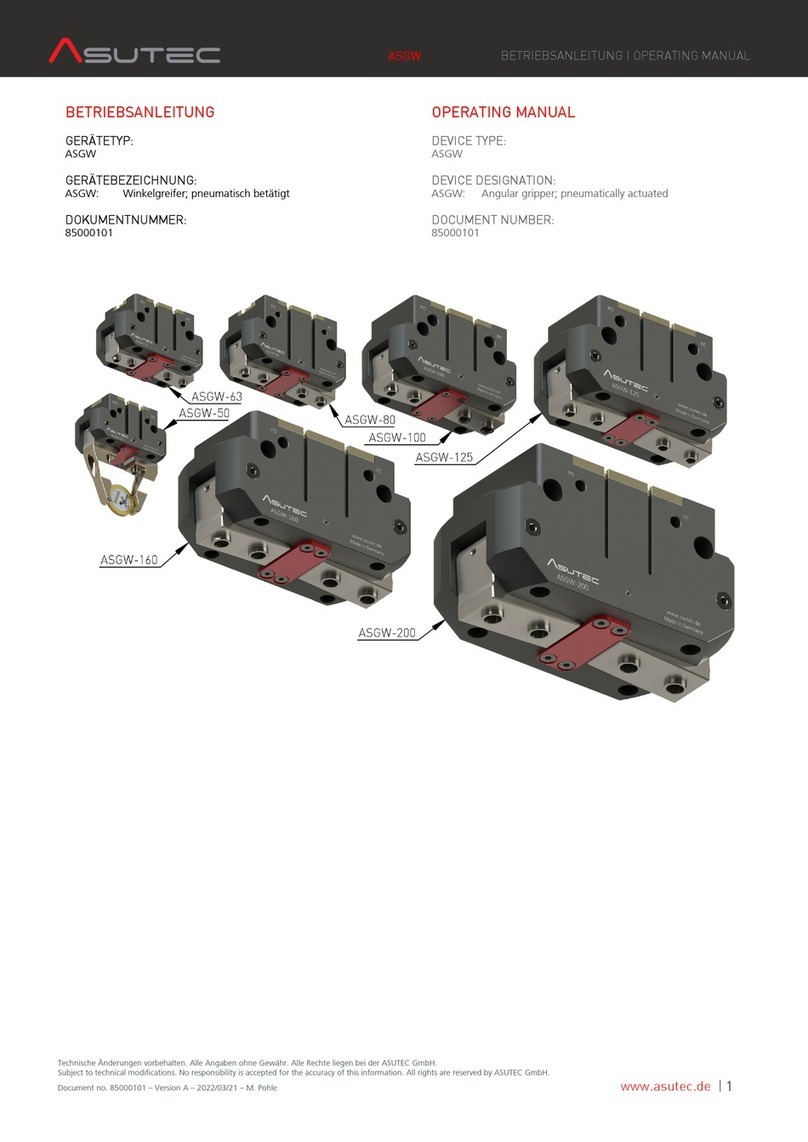
Asutec
Asutec ASGW Series operating manual
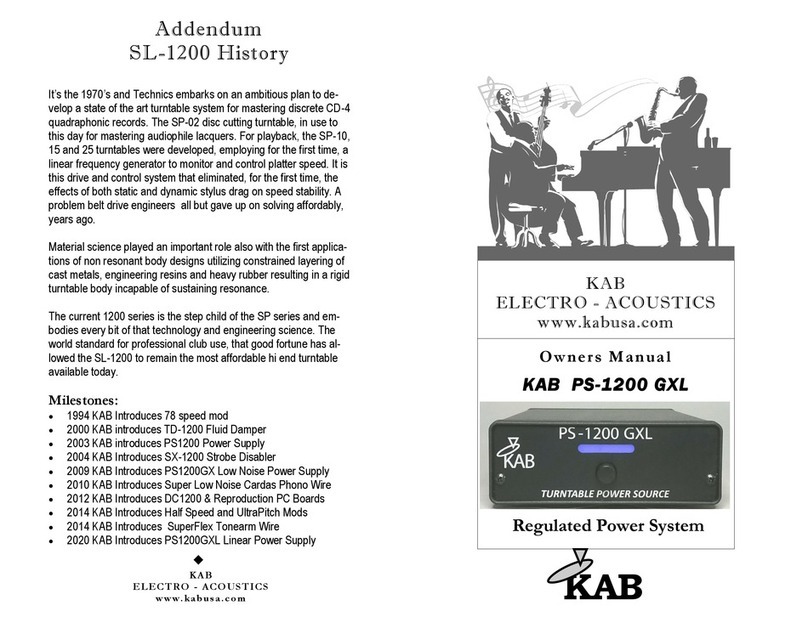
KAB
KAB PS-1200 GXL owner's manual

Elmdene
Elmdene G13804NU manual
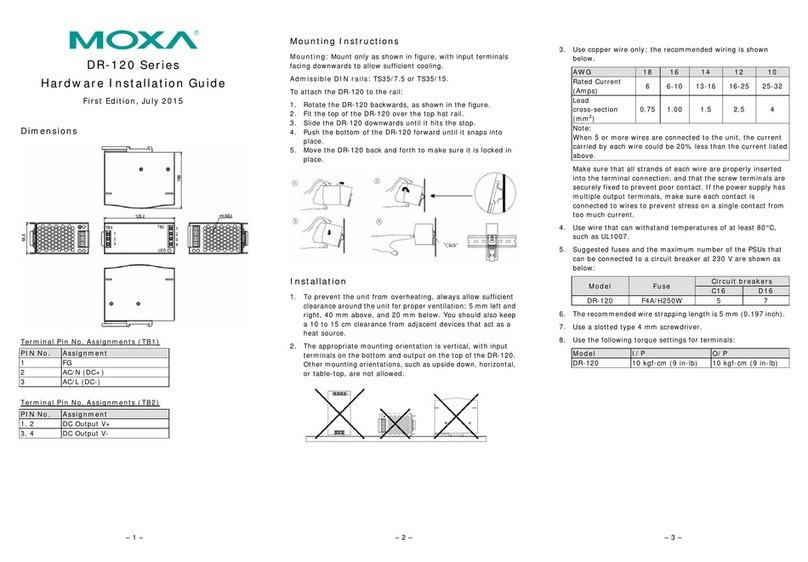
Moxa Technologies
Moxa Technologies DR-120 Series Hardware installation guide
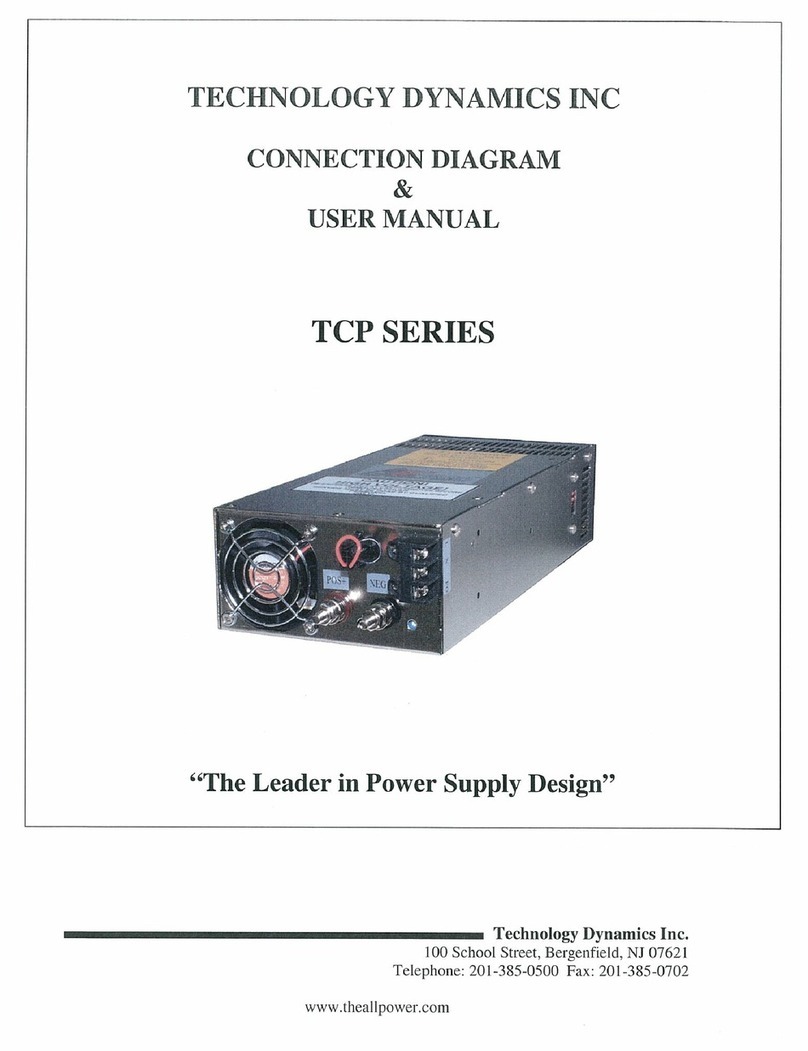
Technology Dynamics
Technology Dynamics TCP Series Connection diagram & user manual
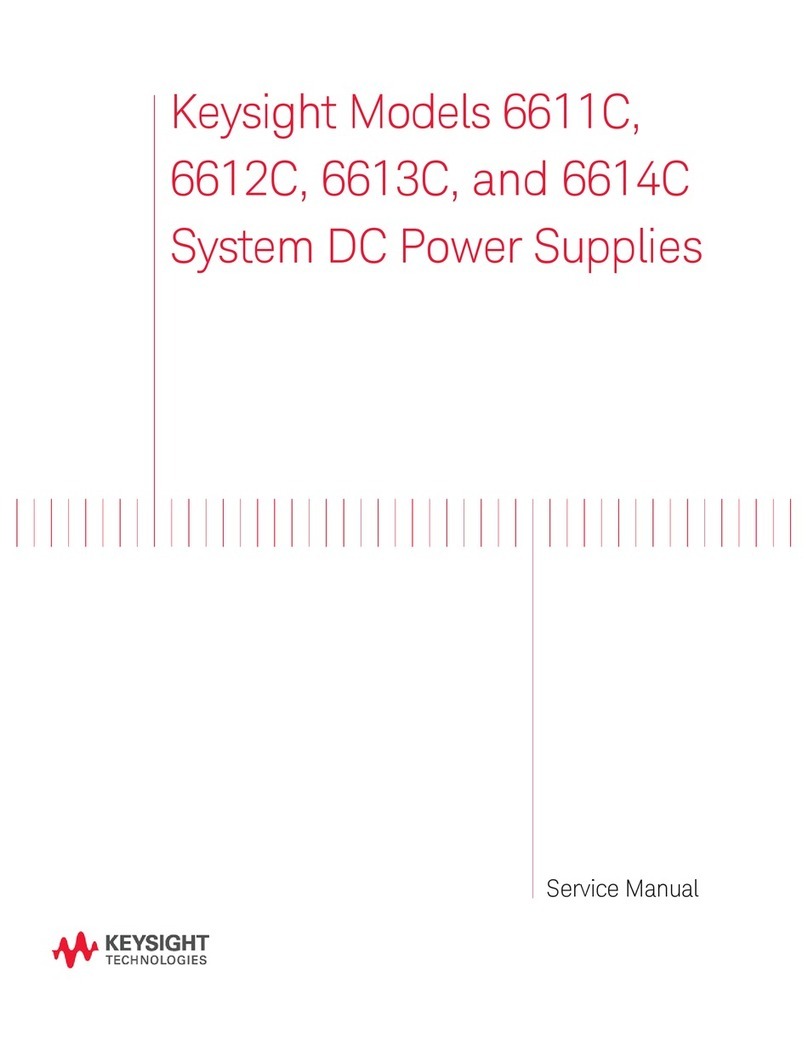
Keysight Technologies
Keysight Technologies 6611C Service manual
